New World 4. Natural, Social and Cultural Environment
1. The earth and the Moon
2. Air and the atmosphere
3. The weather
4. Natural and man-made landscapes
5. The natural environment
1T. First term
C. Chants
G. Glossary
6. Matter and materials
7. Heat, light and sound
8. Energy
9. Machines
10. Work
2T. Second term
C. Chants
G. Glossary
11. Forms of communication
D. Finding out about the past
12. Our recent past
13. Our distant past
14. Spain
3T. Third term
C. Chants
G. Glossary
Este libro contiene:
-
24 secuencias
-
481 recursos
-
Idioma:
- Inglés
Libro de texto
-
1. The earth and the Moon
- Ir a ficha de secuencia
- 0 secuencias
- 26 recursos
We live on the planet Earth. The Earth has one satellite. It is called the Moon. The Earth and the Moon are part of the Solar System. The Solar System is made up of the Sun, the planets, satellites and other objects that move around the Sun. We use maps and globes to show what the Earth looks like. In this unit we are going to study the Earth and the Moon. We are also going to study maps and globes.
-
2. Air and the atmosphere
- Ir a ficha de secuencia
- 0 secuencias
- 27 recursos
Humans, plants and animals need air to breathe and live. Air is a mixture of gases. A layer of air covers the Earth and protects life on our planet. This layer of air is called the atmosphere. When air moves, we call it wind. Wind helps to move sailing boats and turn windmills and wind turbines. In this unit we are going to learn about the atmosphere and the wind, and the different gases in the air.
-
3. The weather
- Ir a ficha de secuencia
- 0 secuencias
- 28 recursos
The layer of air that surrounds the Earth is called the atmosphere. All the weather on the Earth happens in the atmosphere. Changes in the atmosphere cause different types of weather. People who study the weather are called meteorologists. They use data from weather stations and satellites to make predictions about the weather. In this unit we are going to learn about different types of weather.
-
4. Natural and man-made landscapes
- Ir a ficha de secuencia
- 0 secuencias
- 21 recursos
There are places on Earth that have not been changed by humans. These are called natural landscapes. Landscapes that have been changed by humans are called man-made landscapes. There are three different types of man-made landscapes: agricultural landscapes, which have farms, industrial landscapes, where there are factories, and urban landscapes, which are cities. In this unit we are going to learn about natural and man-made landscapes.
-
5. The natural environment
- Ir a ficha de secuencia
- 0 secuencias
- 27 recursos
The place where a living thing lives is called a habitat. When we study a habitat, we look at the living things (animals and plants) that live there. We also look at the non-living things around them. Human activity can cause changes in the environment around us. In this unit we are going to learn about the natural environment.
-
6. First term
- Ir a ficha de secuencia
- 0 secuencias
- 17 recursos
-
7. Chants
- Ir a ficha de secuencia
- 0 secuencias
- 5 recursos
The Moon moves round the Earth, And the Earth moves round the Sun. Mars has got two satellites, The Earth has only one.
-
8. Glossary
- Ir a ficha de secuencia
- 0 secuencias
- 5 recursos
Globe. Globes represent the Earth in its true form, as a sphere. Orbit. To move round a planet or star. The Earth orbits the Sun. Hemisphere. The Earth has two hemispheres: the northern hemisphere and the southern hemisphere. Phases of the Moon. In one month, there are four phases of the Moon. Lines of latitude. The lines of latitude are imaginary parallel circles around the Earth. Rotate. To turn in a circle. [...]
-
9. Matter and materials
- Ir a ficha de secuencia
- 0 secuencias
- 32 recursos
Everything around us is made of matter. Matter can be solid, like a table, liquid, like milk, or gas, like the air. All matter is made of different materials. Some things are made of wood, like a pencil. Other things are made of fibres, like clothes. Some things are made of metal, like scissors. Materials can be natural, like wood and cotton, or artificial, like plastic and glass. In this unit we are going to learn about matter and materials.
-
10. Heat, light and sound
- Ir a ficha de secuencia
- 0 secuencias
- 30 recursos
Heat, light and sound are all around us. We can feel heat from the Sun in the summer and from a radiator in the winter. We need light to see people and objects. We get light from the Sun during the day and from lamps during the night. We hear sounds all the time. Pleasant sounds make us feel happy or relaxed. Unpleasant sounds make us feel unhappy or uncomfortable. In this unit we are going to learn about heat, light and sound.
-
11. Energy
- Ir a ficha de secuencia
- 0 secuencias
- 23 recursos
We need energy to move. Humans get energy from food. Machines get energy from petrol or electricity. The Sun is a natural source of energy. We call the Sun a renewable energy source because it is unlimited. Natural gas and coal are also natural energy sources. But they are non-renewable because they are limited. In this unit we are going to learn about energy and energy sources.
-
12. Machines
- Ir a ficha de secuencia
- 0 secuencias
- 21 recursos
We use machines in many different ways. Machines help to make our work easier. We use them every day. We use different machines for different things. What we use a machine for is called its function. We use cars for travelling, washing machines for washing clothes and diggers for digging holes in the ground. In this unit we are going to learn about machines, their different functions and how they work.
-
13. Work
- Ir a ficha de secuencia
- 0 secuencias
- 24 recursos
People need to work to live. We receive money for the work we do so that we can buy the things we need. Jobs help society to function well. There are many types of jobs. Some people produce food or raw materials, like farmers and fishermen. Others work in industry or services, like miners and teachers. In this unit we are going to learn about work.
-
14. Second term
- Ir a ficha de secuencia
- 0 secuencias
- 22 recursos
-
15. Chants
- Ir a ficha de secuencia
- 0 secuencias
- 5 recursos
Everything is made of matter, all that you can see, From metals underneath the ground to branches on a tree. Some is heavy, some is light, Could be yellow, green or white. Some is liquid, some is gas, Some is solid, all have mass.
-
16. Glossary
- Ir a ficha de secuencia
- 0 secuencias
- 5 recursos
Artificial. We use natural materials to make artificial materials. Plastic is an artificial material. Mineral. Minerals are natural materials. We find them under the ground and in rocks. Material. Materials are the substances we use to make objects. Wood is a material. Recycle. We recycle when we use material from old objects to make new objects. Matter. All living and non-living things are made up of matter. Rock. [...]
-
17. Forms of communication
- Ir a ficha de secuencia
- 0 secuencias
- 25 recursos
We use the phone and email to communicate with one person, and television, radio, newspapers and the Internet to communicate with many people. Computers and the Internet help us communicate quickly and easily with other people. In this unit we are going to learn about communication.
-
18. Finding out about the past
- Ir a ficha de secuencia
- 0 secuencias
- 1 recurso
-
19. Our recent past
- Ir a ficha de secuencia
- 0 secuencias
- 35 recursos
History tells us what happened in the past. There are many ways to find out about the past. We can read diaries and books, and look at old photos. We can also find out about the recent past by asking our parents and grandparents about their lives. In this unit we are going to find out about how people lived in the recent past.
-
20. Our distant past
- Ir a ficha de secuencia
- 0 secuencias
- 42 recursos
The things that happened a very long time ago, happened in the distant past. We know about them because we can see many remains from the past, like monuments, buildings or paintings. Since human beings invented writing, we can also find out about our distant past through books and other written documents. In this unit we are going to learn about the distant past and how people lived thousands of years ago.
-
21. Spain
- Ir a ficha de secuencia
- 0 secuencias
- 35 recursos
Spain is in the south west of Europe. It includes most of the Iberian Peninsula, the Balearic Islands, the Canary Islands and the cities of Ceuta and Melilla in North Africa. Spain has borders with France and Andorra in the north, and Portugal in the west. It is surrounded by the Mediterranean Sea, the Bay of Biscay and the Atlantic Ocean. In this unit we are going to learn about Spain.
-
22. Third term
- Ir a ficha de secuencia
- 0 secuencias
- 17 recursos
-
23. Chants
- Ir a ficha de secuencia
- 0 secuencias
- 4 recursos
To talk to friends and say hello, There's email, post and telephones. To find out things we want to know, There's TV, press and radio.
-
24. Glossary
- Ir a ficha de secuencia
- 0 secuencias
- 4 recursos
Browser. A browser is a program that we use to surf the Internet. Mobile phone. We use a mobile phone to talk to people and to send text messages. Computer. A computer is a machine that can store a large quantity of information in different formats. Presentation. When we give a presentation, we tell our class about a topic. Email. We use emails to send messages, images and sound using a computer connected to the Internet. Press. [...]
-
Aún no hay comentarios, ¡comparte tu opinión! Inicia sesión o Únete a Tiching para poder comentar
La licencia digital es una autorización que permite utilizar un recurso digital de acuerdo con las condiciones legales de dicho recurso. El código que recibas una vez la hayas comprado te permitirá acceder al recurso educativo digital elegido.
Puedes consultar más información en nuestra página de ayuda.

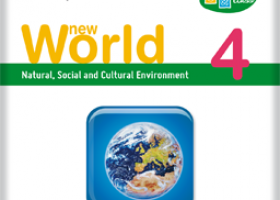


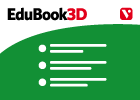
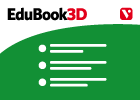
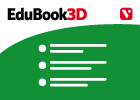
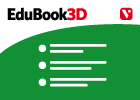

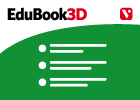
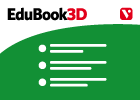
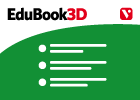
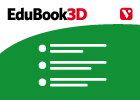

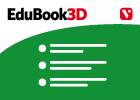
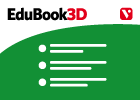
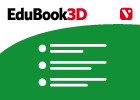

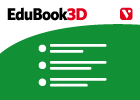
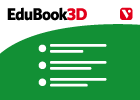
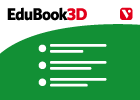



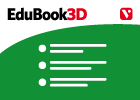
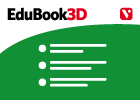
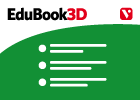
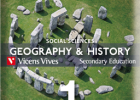
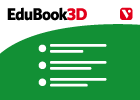

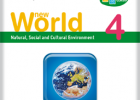


¿Dónde quieres compartirlo?
¿Quieres copiar el enlace?